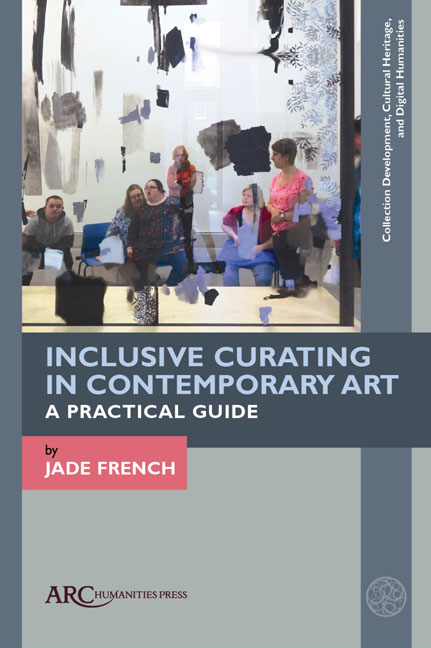Chapter 2 - Finding the “Big Idea”
Published online by Cambridge University Press: 20 November 2020
Summary
Once inclusive curators have undertaken research and began bonding as a group, they can now begin formulating the exhibition's “big idea”; exploring what their exhibition will be about or what topics or issues might it address. In principle, there are endless sources for exhibition ideas but, in practice, they are much more limited. There is also no one set method to facilitate inclusive curators to develop their big idea: some people may sign up for inclusive curating projects with a clear understanding of the topics or issues that they wish to address but, for others, the process can be much more exploratory and emergent. What seems to be common is that the big idea typically emerges from the inclusive curators identifying shared experiences or perspectives through looking towards their own lives, identities, or common causes, which may differ from or challenge the dominant narrative of the museum.
One of the ways I have enabled curating to become more inclusive and accessible is by drawing on existing tools and approaches from other sectors, namely social care. This chapter describes using the person-centred planning tool “PATH” (an acronym for Planning Alternate Tomorrows with Hope). PATH is normally found in social care practices as an approach to undertake group planning to support the core goal. In addition, this chapter also foregrounds zine making, a do-it-yourself publishing practice, as a methodology to enable inclusive group discussion and reflection. Case studies are shared from Auto Agents that illustrate how creating a zine about their life experiences as intellectually-disabled people who need support enabled them to develop the title of their exhibition.
The “Big Idea”?
Some curators begin their exhibition development process by identifying and developing and a “big idea.” In my experience, this is an accessible concept for inclusive curators and works well to support them in refining their exhibition's subject-matter. In brief, “the big idea” is an approach developed by exhibition consultant Beverly Serrell outlined in her foundational text, Exhibit Labels: An Interpretative Approach. The big idea is “a sentence—a statement—of what the exhibition will be about. It is one complete, noncompound, active sentence, that identifies a subject, an action (the verb) and consequence (so what?).”
- Type
- Chapter
- Information
- Inclusive Curating in Contemporary ArtA Practical Guide, pp. 41 - 58Publisher: Amsterdam University PressPrint publication year: 2020



